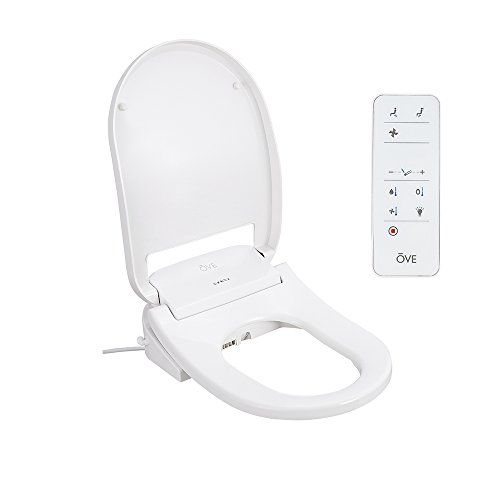How To Raise A Bathroom Vanity
If you want to learn how to raise a bathroom vanity, keep reading. Even while it might seem like a challenging undertaking, it can be finished fast with the right strategy and equipment. Our comprehensive guide is designed to assist you at every turn and ensure that you obtain the bathroom vanity height you desire. Explore how these concepts and techniques can alter the design of your bathroom.

Overview:
Raising a bathroom vanity requires a number of crucial considerations, including understanding standard heights, figuring out your particular needs, having the right tools, adapting plumbing, ensuring stability, taking into account the bathroom's overall design, and maintaining safety throughout the process. To get the desired result and maintain the functionality of your bathroom, these elements are crucial. In order to ensure that you understand how to elevate a bathroom vanity in a way that is practical, efficient, and elegant, this guide carefully explores each of these components.
Understanding the standard vanity heights
Standard bathroom vanity heights range from 30 to 36 inches. However, these aren't absolute figures, but rather a guideline for homeowners and builders alike. The standard height has been established for ergonomic reasons, promoting comfort and ease of use. The best height for you depends on your personal preference and physical stature. If your home has residents of varying heights, a height-adjustable vanity could be the ideal solution. Remember, the objective is to have a vanity that doesn't strain your back or neck. Tailoring your vanity to your unique needs can significantly enhance your bathroom experience.
See more: How To Make Bathroom Smell Like A Spa
Assessing your personal needs
Your personal needs play a significant role in determining how to raise a bathroom vanity. For instance, taller individuals may prefer a higher vanity to avoid bending, while shorter individuals or children might need a lower one. Consider the needs of every individual using the bathroom regularly. Assessing your requirements also involves looking at the storage needs and the amount of counter space you desire. By focusing on your personal needs, you can ensure that your raised vanity not only looks great but also serves its purpose efficiently.
Having the right tools
The right tools are essential for successfully raising a bathroom vanity. You'll need basics like a level, tape measure, drill, and possibly a saw, among others. The kind of tools you need may vary depending on the type of vanity and the material it's made of. Additionally, you might need some specific plumbing tools if changes to the water and drain lines are required. Having the right tools on hand will make the job smoother and prevent potential damage to your vanity or bathroom.
Adapting plumbing
Raising a bathroom vanity often means adjusting the existing plumbing. This involves extending water supply lines and drain pipes to accommodate the new height. While some may choose to tackle this themselves, others might consider hiring a professional plumber to ensure the job is done correctly and to avoid potential water damage. Remember, any modifications to your plumbing should adhere to local building codes to maintain safety and functionality.
See more: How To Get Rid Of Cockroaches In Bathroom
Ensuring stability of the vanity
One crucial factor when raising a bathroom vanity is to ensure its stability. The last thing you want is a wobbly or unsteady vanity. When raising the vanity, it's important to secure it properly to the wall and floor. Use high-quality brackets and fasteners, and check the vanity's balance with a level. It's also essential to consider the weight of the vanity and whether your bathroom floor and wall can support it.
Considering the overall bathroom design
Your bathroom vanity shouldn't stand in isolation; it needs to blend with the overall design and decor of your bathroom. When deciding on how to raise a bathroom vanity, consider the impact it will have on the aesthetic balance of the room. This includes the mirror placement, lighting fixtures, and the relative height of other fixtures. A well-raised vanity should enhance the visual appeal of your bathroom, not detract from it.
Maintaining safety during the process
Safety is paramount when attempting to raise a bathroom vanity. This involves physical safety during the process, such as proper lifting techniques to avoid back injury, and wearing protective gear like gloves and safety glasses. Also, ensure that the vanity and its fixtures are securely installed to prevent accidents in the future. Finally, remember to consider electrical safety if your vanity has built-in outlets or lighting. It's always wise to consult with a professional if you're unsure about any aspect of the process.
What is the normal height of a bathroom vanity?
The typical height of a bathroom vanity is between 30 and 36 inches. This is only a recommendation; it might not work for everyone. The height that, given your tastes and physical stature, is most comfortable for you must be taken into consideration.
Which tools will I need in order to move a bathroom vanity?
A level, a tape measure, a drill, and possibly a saw are tools you'll need to elevate a bathroom vanity. Also, you might require specific plumbing equipment if adjustments to the water and drain lines are required. Several tools may be required depending on the type of vanity and the material it is made of.
Would the plumbing need to be changed if I increased my vanity?
It's true that moving the plumbing already in place is frequently necessary when raising a bathroom vanity. Water supply lines and drain pipes must be extended to account for the extra height. It's crucial to adhere to local construction codes during this phase to ensure functionality and safety.
How can I guarantee the stability of a raised vanity?
To preserve its stability, a raised vanity needs to be tightly secured to the wall and the floor with premium brackets and bolts. Using a level to ensure the vanity is balanced is an additional vital step. You should also consider the weight of the vanity and if the bathroom's floor and wall can support it.
Is it essential to consider the bathroom's overall decor while relocating a vanity?
Clearly, it's important to consider the room's overall design while deciding how to raise a bathroom vanity. The elevated vanity should integrate in with the overall aesthetic harmony of the room through the placement of the mirror, lighting, and other fixtures' relative heights. A properly raised vanity should increase, not lessen, the aesthetic appeal of your bathroom.
In conclusion, there are a number of significant considerations to make when learning how to lift a bathroom vanity. It's important to be aware of standard vanity heights, assess your individual needs, have the right tools, modify your plumbing, ensure the stability of the vanity, consider the overall bathroom design, and keep safety throughout the process.
Each of these components is necessary to achieve a wonderful result without compromising your bathroom's functionality or aesthetic appeal. By carefully considering these variables, you may enlarge your bathroom vanity with confidence to create a more comfortable and practical atmosphere. Raising a bathroom vanity is an essential step in attaining the goal of making your bathroom experience as convenient and comfortable as feasible.








.jpg)








